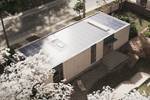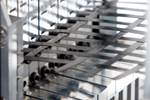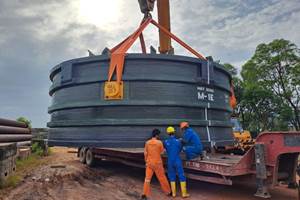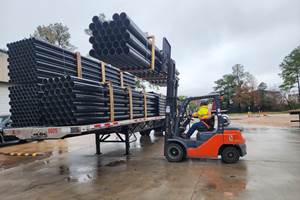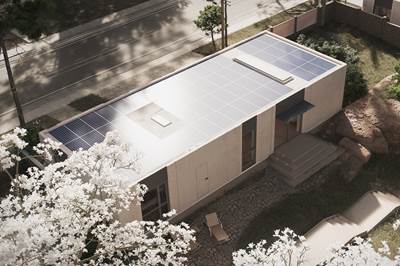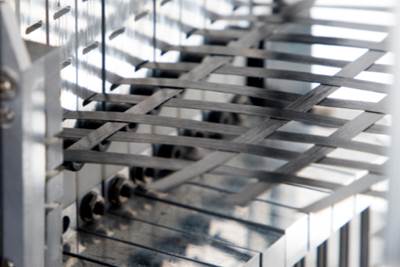LafargeHolcim France acquires stake in 3D-printed concrete specialist XtreeE
XtreeE’s current portfolio includes high-performance, 3D-printed concrete applications. Next steps include R&D work in continuous fiber-reinforced concrete.
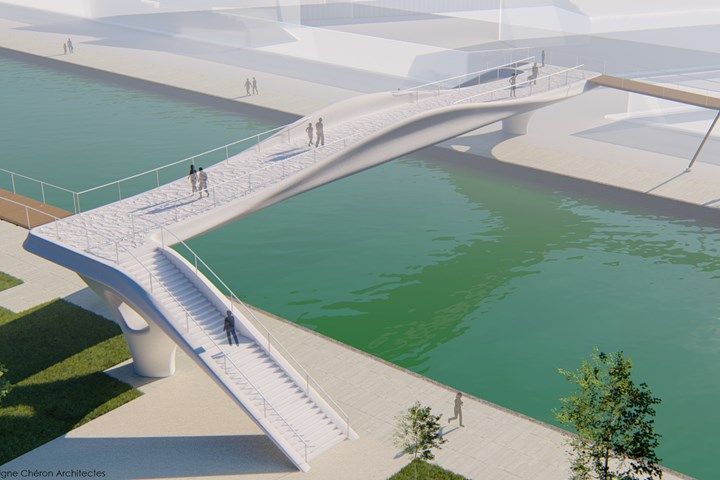
This pedestrian bridge concept, expected to be built for the 2024 Olympic Games in Paris by a consortium including XtreeE and LafargeHolcim, will be manufactured from unreinforced 3D-printed concrete. Photo Credit: XtreeE
3D-printed concrete specialist (Rungis, France) announced on March 11 that strategic partner LafargeHolcim France (Clamart) has acquired a 20% stake in the company, making LaFargeHolcim a reference shareholder alongside XtreeE founders, Vinci Construction Invest and the Shibumi International investment fund. The goal for the partnership is to combine the companies’ technical expertise to accelerate the development and marketing of Industry 4.0 solutions for the sustainable construction of buildings and infrastructure.
According to XtreeE, 3D printing is one technology that will prove to be a sustainable solution in the construction sector, using up to 60% less concrete on some projects and enabling the implementation of new, printable materials with a reduced carbon footprint. The company also says customized solutions can help control costs and deadlines, and 3D-printed concrete components manufactured off-site reduce the noise and disruption of a typical construction site.
Currently, according to Alban Mallet, CEO of XtreeE, the company’s robotic, large-scale, extrusion-based 3D printing system incorporates small amounts of chopped fiberglass into their high-performance concrete before printing. “However, we would not consider it to be fiber-reinforced yet. The amounts are too small, more like an additive into the concrete,” he says.
Meanwhile, Mallet adds that the company has partnered with French university École des Ponts (Paris) to research materials, technology and applications of continuous-fiber 3D-printed concrete as well, demonstrating prototypes with both carbon and glass fiber. The fiber, he explains, will be used for large infrastructure and construction applications that require higher flexural strength than unreinforced concrete can provide. The company hopes to commercialize its fiber-reinforced concrete in the next year or two.
XtreeE, which also has developed design and data collection software for its systems, also aims to accelerate, both in France and globally, the adoption of its network of connected 3D printing units.
The company currently operates five plants, a pilot facility in Rungis, France, and additional production units in France, the United Arab Emirates, Japan and the U.S. The company plans to open three more units in 2021.
With the new partnership, XtreeE says it will benefit from LafargeHolcim’s strong international presence, its R&D capabilities at its site in L'Ile d'Abeau, France, and its strength as a leading player in innovative construction materials. Mallet says, “LafargeHolcim's expertise in high-performance concrete and its know-how across the entire construction value chain will enrich the national and international development of our network of connected 3D printing units. With this network, our customers are given not only the capacity to produce themselves, as close as possible to their market, but also the ability to control the digital chain, from design to production.”
François Petry, CEO of LafargeHolcim France, adds, “The ecological transformation of the construction sector, and more specifically of concrete, also involves the digital revolution and the new environmental performance offered by 3D printing. By strengthening our strategic partnership with XtreeE, one of the most innovative leaders in this field, we are opening a new chapter for our innovative materials and for the evolution of construction methods.”
Related Content
Pultron Composites GFRP rebar addresses facility, marina project challenges
The company’s Mateenbar GFRP rebar has led to more durable solutions for production of a new medical research center, and to improve structures regularly exposed to harsh marine conditions.
Read MoreComposites end markets: Infrastructure and construction (2024)
Composites are increasingly used in applications like building facades, bridges, utility poles, wastewater treatment pipes, repair solutions and more.
Read MoreFiberglass conduit manufacturer grows into new products, infrastructure applications
Texas-based Champion Fiberglass, a five-time CW Top Shops honoree, expands its success in the fiberglass composite conduit market into new applications and products, looking toward future automation and sustainability initiatives.
Read MoreBcomp, Temca achieve intricate composite cladding for French school façade
A combination of flax and glass fibers went into the development of 880 openwork, shade-providing panels for an international school in France.
Read MoreRead Next
Composites speed concrete facade fabrication
The 45-story One South First building, on the 11-acre Domino Park campus in Brooklyn, N.Y., features a geometrically complex concrete facade made, in part, with composite molds fabricated using large-format additive manufacturing.
Read More3D-printed prefab homes aim to disrupt construction market
California startup Mighty Buildings’ award-winning prefabricated building production process relies on large-format 3D printing, UV-curable resins, digital design and automation.
Read MoreAutomated weaving system targets high-performance, high-volume applications
Startup WEAV3D Inc.’s technology produces highly tunable, woven lattice reinforcements for cost-effective, high-volume automotive composites and precast concrete applications.
Read More.jpg;width=70;height=70;mode=crop)

